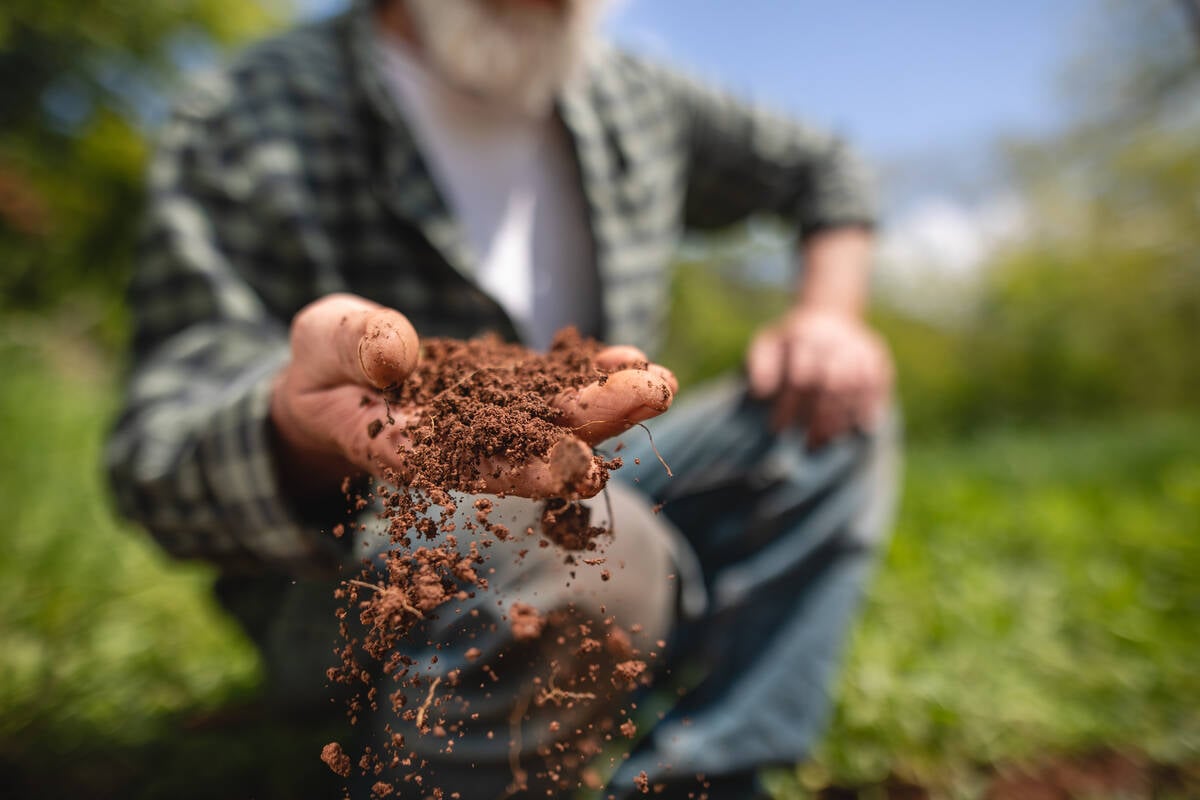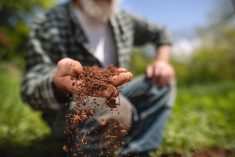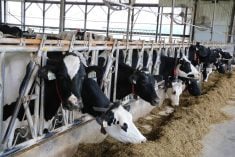Manitoba Agriculture’s soil surveys can help producers understand and manage their farms better, say provincial soil experts.
“The surveys we produce can be used for agriculture, land use planning and many other applications,” said Megan Westphal, soil survey specialist with the province’s ag department.
Soil data and maps can help producers develop strategies for land use.
Westphal provided an overview of Manitoba Agriculture’s soil-oriented activities, and how their maps can be used by farmers, during a late-May Crop Talk webinar.
Read Also

Finally getting paid for sustainable farming?
Alberta project says they might have a line on a workable ecosystem credit model to reward farmers for sustainability, and Manitoba might be next
A soil survey indicates the soil’s texture, internal drainage, parent material, depth to groundwater and landscape characteristics. It also classifies the topography of an area as well as the degree of erosion, stoniness and salinity.
“We also take samples back to the lab to determine soil characteristics such as soil pH and carbon content,” said Westphal.
The maps provide the spatial distribution of soils.
“Each soil type will have a unique set of physical, chemical and mineralogical characteristics that have different behaviours, limitations and potentials under different uses.
“Soil scientists conduct soil surveys to learn what kinds of soils and materials are in an area, where they’re located and their ecological relationships and how they can be used. The purpose is to produce a soil map in the end.”
The maps are colour coded. Each colour represents a different soil type that will react differently to different management practices.
Manitoba has a long history of conducting soil surveys, beginning in 1926. As agriculture intensified, and with accompanying advancements in technology, it became clear that surveys were lacking. In the 1970s, detailed soil surveys began in Manitoba.
“This involved conducting more soil inspection pits per area to provide more detailed landscape and soil information,” said Westphal. “With this more detailed information, we can have greater confidence in determining the land’s agriculture capability.”
For producers, knowing soil type can determine what crops can be grown on a parcel. Maps can also offer insight into different management practices that might be required based on the topography or soil textures and can be useful for nutrient planning and management.
“You can turn on and off different layers and look at a soil texture map and you can plan out different management zones or nutrient management zones based on the soil texture in the area,” Westphal said.
The same holds true with salinity.
The metric for agricultural capability is an important feature.
“It’s important to note that the system does not rate the productivity of the soil,” said Wesphal. “Rather, it rates the capability of an area to sustain agricultural crops based on the limitations due to different soil properties and landscape features.”
There are seven classifications of agricultural capability, ranging from Class 1, which has no significant limitations for crop use, to Class 7, which has no capability for crops or pasture.
Another important feature is irrigation suitability.
“This is the general suitability rating for irrigated crop production,” Westphal said.
The classification system considers soil and landscape characteristics. It then ranks those characteristics in terms of their quality under long-term management under irrigation.
“This interpretation does not consider factors such as water availability, water quality or economics,” said Westphal. “It’s just determining the general suitability of the land for irrigation.”
Producers can turn to those soil maps and soil data while making an environmental farm plan, a prerequisite for many current funding programs. They can also be of use in precision farming, as well as planning for potential tile drainage. The maps can help determine and define soil management zones within an operation and identify high- and low-risk areas for salinity or erosion.
Producers can get tips on interpreting the maps through the Manitoba Agriculture website.
Soil survey maps are available on the following websites:
















